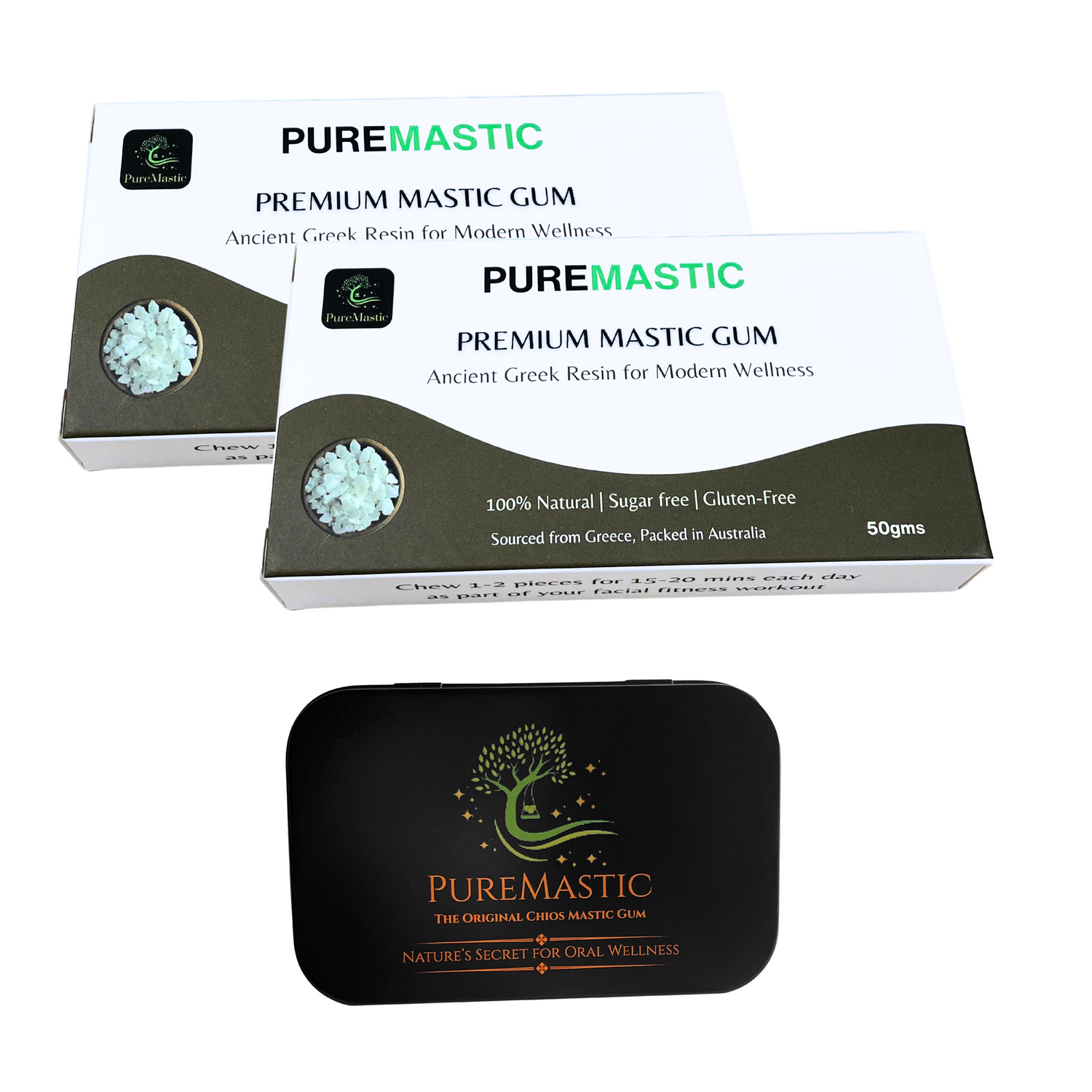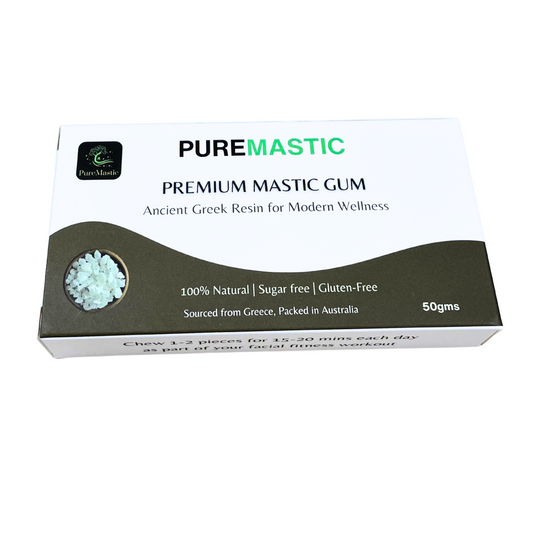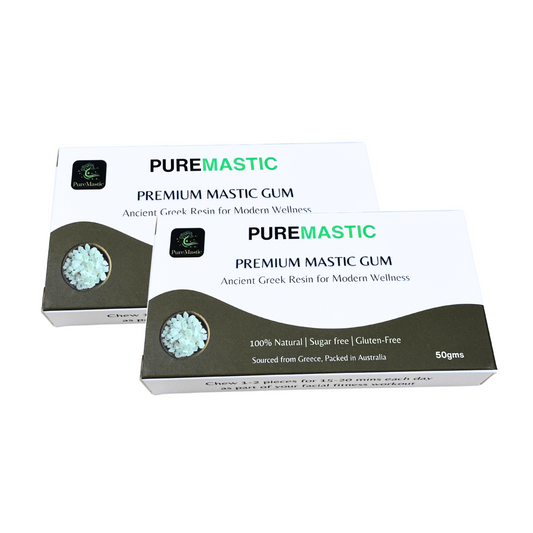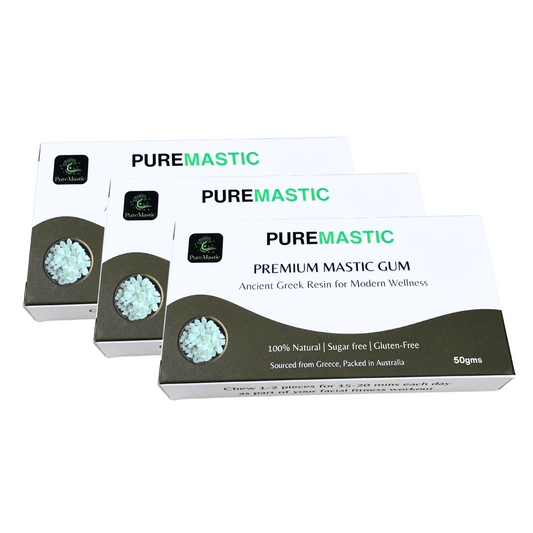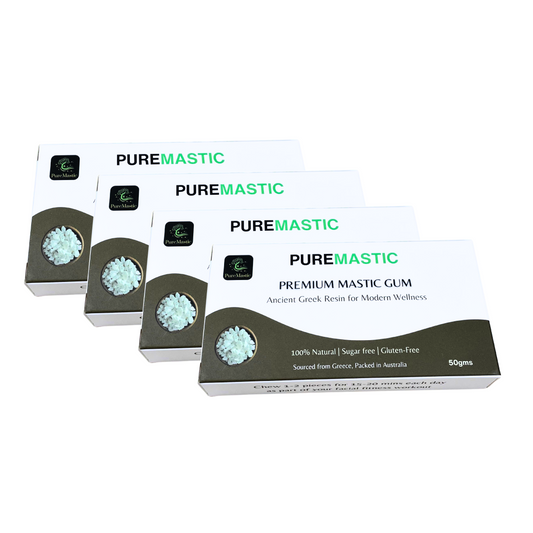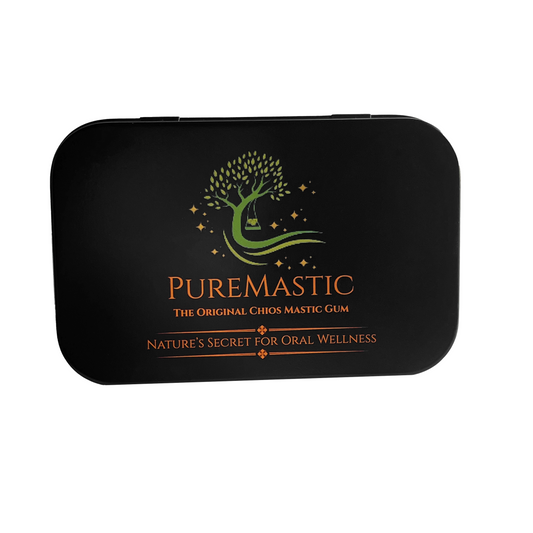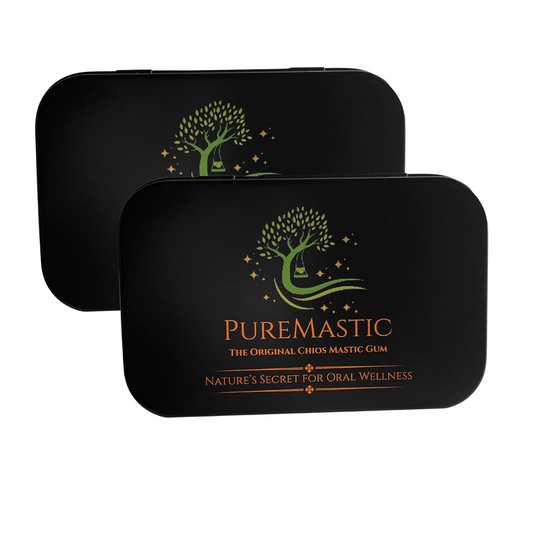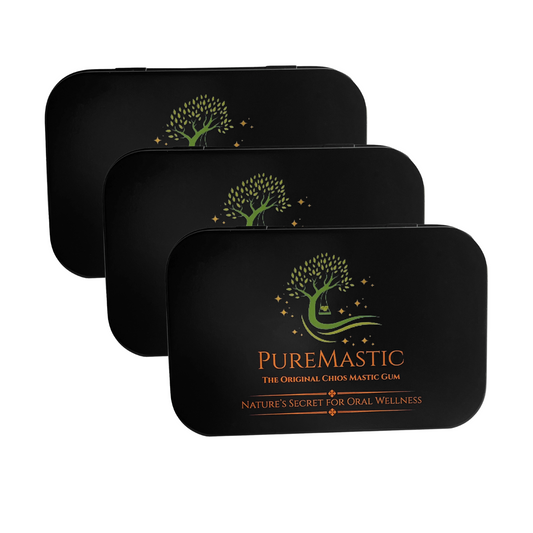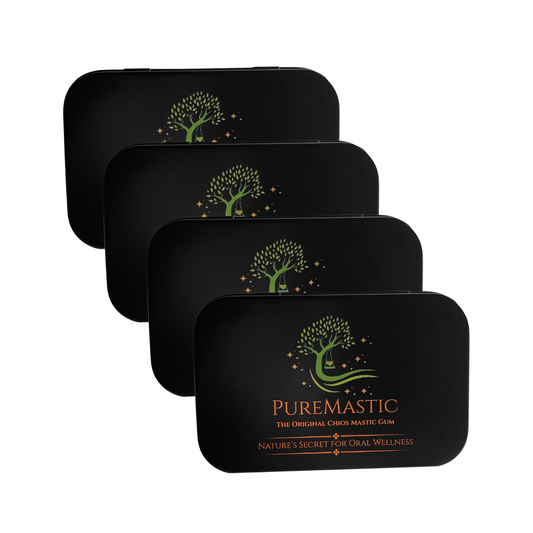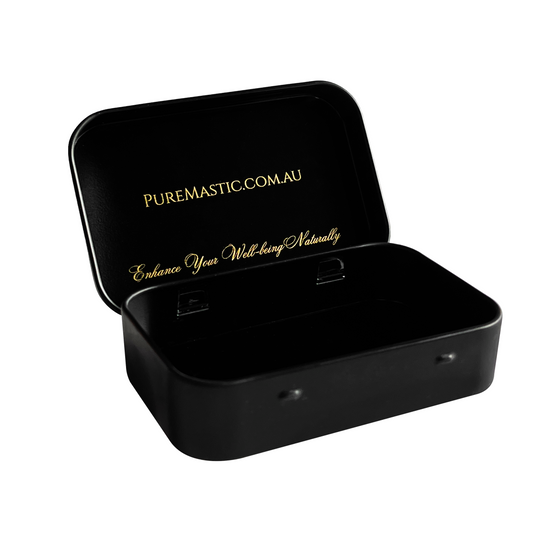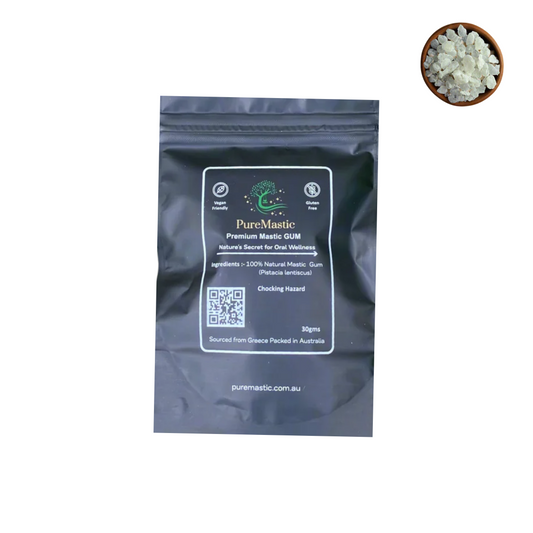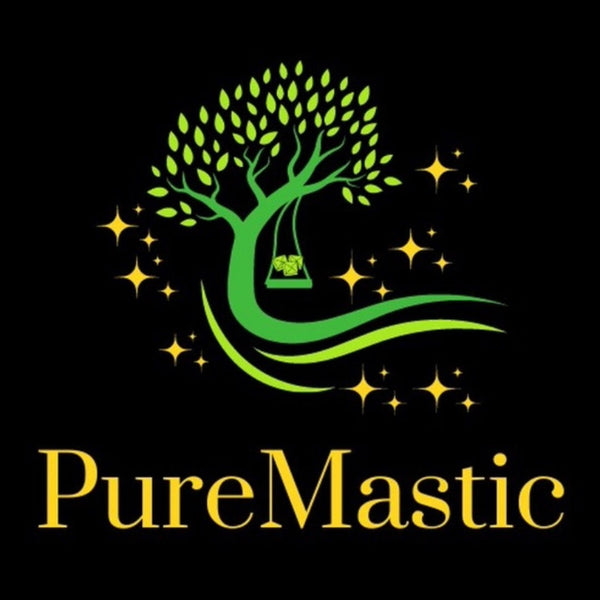
The Ancient Resin of Healing, Culture, and Science
Introduction
For millennia, Chios Mastiha (commonly known as Mastic Gum) has been an integral part of the identity of Chios Island — a fragrant jewel of the Aegean Sea, located on the eastern maritime border of Greece. This rare natural resin, revered since antiquity, continues to bridge ancient tradition with modern scientific discovery.
Origins and Botanical Background
Chios Mastiha comes from the Pistacia lentiscus L. species, belonging to the Anacardiaceae family — an evergreen shrub that thrives throughout the Mediterranean basin. However, only one unique variety, Pistacia lentiscus var. chia, produces the authentic resin known worldwide as Chios Mastiha. This exclusive cultivar grows solely in the southern part of Chios, a region known as Mastihohoria (the Mastiha Villages).
The resin itself is a white-to-yellowish, semi-transparent substance with a distinct balsamic aroma. Often referred to as the “Tears of Chios”, Mastiha is harvested by making small incisions on the tree trunk and its larger branches. The exuded sap drips to the ground as a sticky, translucent liquid, which solidifies over 15–20 days into irregularly shaped crystals.
Once collected, the hardened resin is carefully cleaned and stored in wooden boxes in cool conditions for further processing and quality control.
Chemical Composition and Bioactive Compounds
The remarkable biological activity of Chios Mastiha is attributed to its rich chemical complexity. It contains a diverse array of natural compounds, particularly mono- and sesquiterpenoids (Barra et al., 2007) and triterpenoids such as masticadienonic acid (Assimopoulou & Papageorgiou, 2005). Approximately 25% of its weight comprises a natural polymer that, in acidic environments, transforms into a fluid resin — believed to have cytoprotective effects (Dimas et al., 2000).
Altogether, researchers have identified over 70 distinct components in pure Chios Mastiha (Kaliora et al., 2000), confirming its status as a potent natural bioactive compound.
Traditional and Historical Uses
Chios Mastiha has held a sacred place in Greek medicine and culture for more than 2,500 years. Ancient physicians such as Hippocrates, Dioscorides, and Galen all documented its healing properties, recommending it for gastrointestinal disorders including abdominal pain, dyspepsia, gastritis, and peptic ulcers.
Throughout the Byzantine and Medieval periods, Mastiha was widely traded and valued for its therapeutic and aromatic qualities. Its significance grew during the Genoese occupation of Chios, when the resin became a prized export to the Islamic world and across Europe. During the Ottoman era, Mastiha provided immense economic privilege to the island — even securing locals a reduction in taxation due to its importance.
Modern Applications and Scientific Validation
In the modern world, Chios Mastiha continues to serve multiple roles — as a culinary ingredient, chewing gum, fragrance enhancer, and therapeutic aid. It is particularly recognized for its role in digestive comfort, oral health, and skin care. Brands like PureMastic continue this tradition by offering authentic, high-quality Chios Mastiha to consumers worldwide seeking natural wellness solutions.
Recent scientific investigations have substantiated its traditional uses, highlighting the following bioactivities:
- Gastrointestinal healing
- Antioxidant and anti-inflammatory actions
- Antidiabetic and antimicrobial properties
- Oral hygiene and skin health benefits
Independent research teams in Greece and abroad continue to explore its therapeutic scope, through both laboratory studies and clinical trials, offering solid evidence that Chios Mastiha remains a valuable natural resource in modern medicine.
Global Recognition and Regulatory Status
The international acclaim of Chios Mastiha has been reinforced through several official recognitions:
- EU:- Granted Protected Designation of Origin (PDO) status in the European Union for its resin in 1997.
- Ayurvedic Pharmacopoeia of India: Listed under the name Rumimastagi (Resin).
- 2014: The know-how of cultivating Chios Mastiha was inscribed on UNESCO’s Representative List of the Intangible Cultural Heritage of Humanity.
- 2014: Awarded Good Manufacturing Practice (GMP) certification by the Greek National Organization for Medicines (EOF).
- 2014: Approved as a Health Functional Food by the Korea Food and Drug Administration (KFDA).
- 2015: The European Medicines Agency (EMA) issued a Herbal Monograph recognizing Chios Mastiha as a traditional herbal medicine used for mild dyspeptic disorders, minor skin inflammations, and the healing of small wounds.
Conclusion
From its ancient roots in Greek tradition to its modern recognition in pharmacology, Chios Mastiha stands as a symbol of nature’s enduring wisdom. The resin that once sweetened ancient breath and soothed weary stomachs now continues to inspire researchers and healers alike. Its scientific validation, global certifications, and cultural heritage status secure Chios Mastiha’s position not only as a regional treasure — but as a timeless gift of natural medicine.
